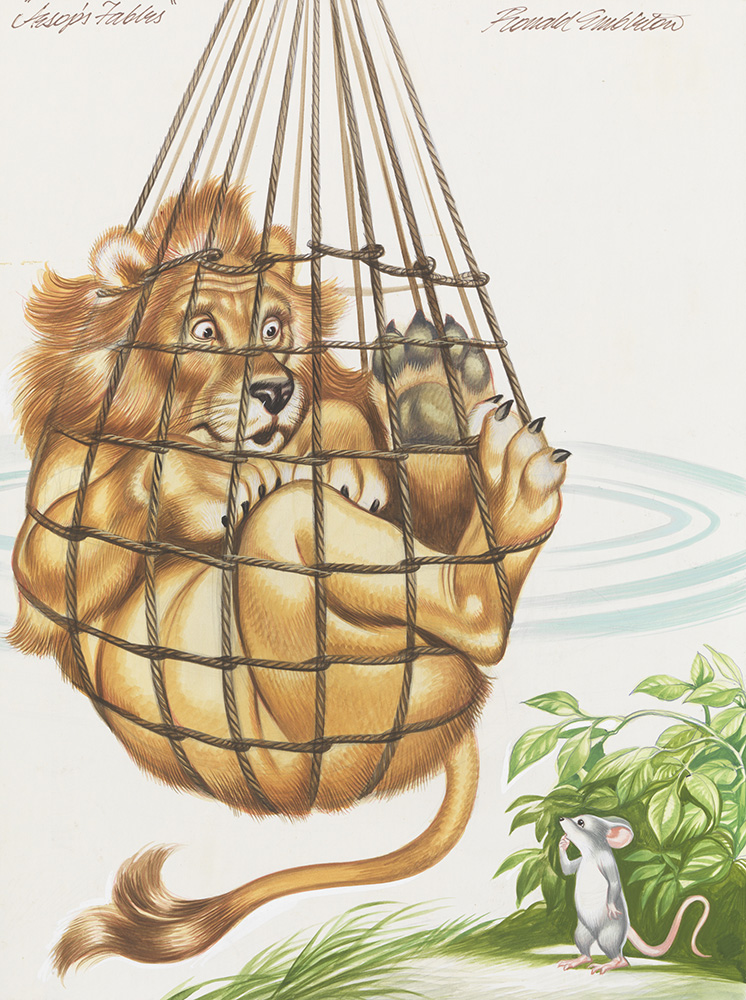For: 6th grade students
Objectives:
_ Understand and describe differences between two animals.
_ Make predictions about a story.
_ Describe emotions.
_ Learn about a famous fable, its author and the moral of the story.
Lesson Planning:
1. In the first place, I would ask students to describe the two animals in the picture. They can also add more information about those species.
_ Lions are big, strong and fierce. They have got sharp teeth and big claws. They live in the savanna and eat meat.
_ Mice are small, not very strong and fearful. They have got strong teeth and big ears. They live in the forest or near humans. They eat fruits, seeds and grains
2. In the second place, I would ask them what happened? They would try to guess why the lion got caught in a net. Then, I would ask them these questions:
_ What is the mouse thinking?
_ Is the mouse scared? Why?
_ Is the lion scared? Why?
3. In the third place, I would ask them to use comparatives to describe the scene. For example,
_ The lion is bigger than the mouse.
_ The mouse is smaller than the lion.
_ The lion is more scared than the mouse.
_ The mouse is more relaxed than the lion.
4. In the fourth place, I would ask them what they think it is going to happen next using questions such as,
_ Is the mouse going to run away and leave the lion alone?
_ Is the mouse going to ask for help?
_ Is the lion going to escape by himself?
_ Is the mouse going to help the lion escape? How?
5. After thinking about the different possibilities, I will tell them the story. I will also explain to them that this is a famous fable by Aesop, a Greek writer who wrote this fable in the 7th century Before Christ. We will also talk about other famous fables, such as “The town mouse and the country mouse”, “The hare and the tortoise”.
6. Finally, we will talk about the moral of the fable, which is- whoever it be, whatever size, we should help each other, and these kind deeds always get rewarded. Being helpful to others is the most significant virtue, and everyone is unique in their own way.
We can use moral stories in the classroom to teach kids good values and make them think about how people react in different situations.




Comentarios
Publicar un comentario